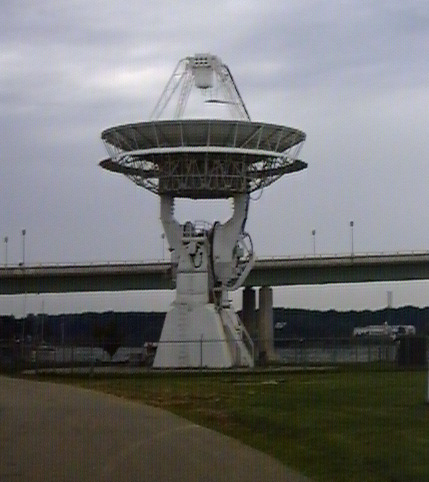
12 METER DISH

12m Dish Legacy: Then Professor Bill Bagaria, the AERO department director of Astronautics, began working with Dr. Halbig, then the Chairman of the Language Studies Department, and ____, the chairman of Oceanography to locate a suitable ground station for space communications and for bringining in direct foreign language broadcasts. . With the assistance of Dr. George Piper who was an ex-center director and filling the USNA NASA chair, They located a 12 meter dish that was part of the original NASA ______ network with sister dishes at Goddard, Goldstone, Alaska, xxxx, yyyy, zzzz. . The last mission was tracking the IUE? . By 1988 or so, the NASA Goddard dish was available for excess and a contract was awarded for about $1.5M to Bendix Field Engineering of Camp Springs Maryland to transport the dish to USNA and refurbish it. . The statement of work also required a new tracking system and the installation of feeds for C and Ku band TVRO and an offset feed for S-band.
Language Studies: For the first several years, the primary users of the dish were the language sutdies department with live TV feeds from the Russian language geostationary satellites over the eastern horizon and occasional feeds from the Russian Molnyia satellites high over the poles. . In addition, occasional teleconferences and video feeds were arranged for the Educationa Resources Center ERC (now MSC). . There was an 800 foot coax run from the satellite ground station in Rickover 122 to the ERC facilities using the existing video distribution cables in the academic buildings. . These cables were abandoned after the Hurricane Isabel flood in 2003?
Satellite Communications: In the early 1990/1991 time frame, NASA Astronaut Ron Parise flew on the ASTRO mission and carried an Amateur Radio Packet Transponder on the Space Shuttle, similar to the designs we worked on in 1985. . During this mission, midshipmen of the USNA Amateur Radio Club made contact via the Space Shuttle transponder for our first USNA satellite communications.
The next major experiment was the INSPIRE mission on STS-???. During this mission, midshipmen operated special VLF receivers at USNA and out in the bay on board a YP to try to detect special LF emissions via ionized currents in the upper atmosphere.
During the same 1990's, a cosmonaut on the Space Station MIR named __________ requested to install an Amater Radio on the space station. Using the 12 meter dish, USNA was able to communicate via this transpodner to the crew of MIR and to other similar amateur radio ground stations in the footprint. . Subsequently cosmonaut Sergey Krikalev used the amateur radio data link to get background news and information of the 1989 collapse of the Soviet Union while he remained in orbit for over ____ months.
Space Shuttle Communications: The most ambitious achievement during this time frame was the configuration of the USNA 12m dish with a 1 Kw amateur radio UHF Video transmitter to participate in the first live uplink of live fast-scan TV to the space shuttle from the ground on mission STS-37. . During this mission, the USNA dish was the first ground station to be seen in full color on board the shuttle. . The dish was used on all subsequent Shuttle Amateur Radio Experiments (SAREX) including another GOddard experiment called SAFEX in 1995?).
Dish Controller: By 19xx the dish was showing signs of age and the original controller was acting up. WIthout a continuous funding stream for maintenance of the original Bendix control system, USNA removed the controller and replaced it with an organic micro processor controller. This simple controller, about the size of a laptop, replaced over 10,000 feet of cabling, and 9600 connections plus it eliminated a rack and a half of hardware and about a bookcase full of documentaion. The new controller was reliable and simple, and could not only point the dish to GEO and LEO satellites, but also to the star field and noise sources. . The controller was written in QBasic at the time and was maintainable. . But on the other hand, it was never proven on fast LEO tracking because s suitable mission and project never quite emerged.
Project SAIL: One mission project was undertaken by reserve Commander Randy Seftas from Goddard, to experiment with Spacecraft Automation by using the UFO-1 spacecraft which was in supersynchronous orbit and available for experimentation. . First, the ability to receive FLEETSAT telemetry was demonstrated and then telemetry from UFO. . Crypto was installed to enable commanding on the uplink, but permission was never forthcoming. . The project ran out of funds by 19__.
ETC...
Return to the Satellite Ground Station